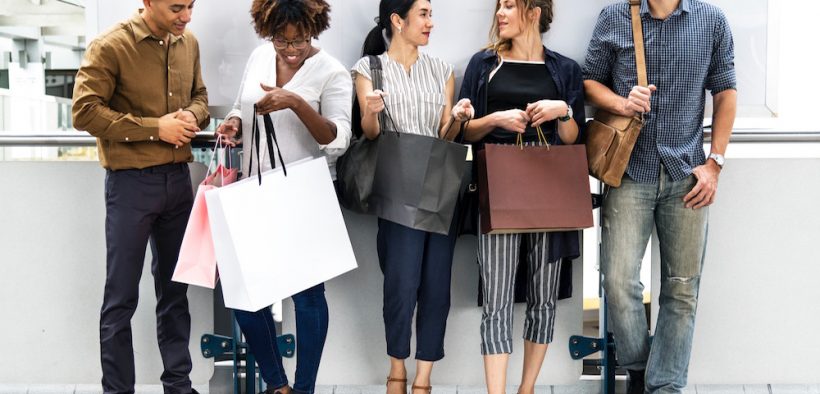Introducing Tilly: A Virtual Shopping Assistant in Your Pocket
Share

Imagine a virtual shopping assistant that will help you choose the right products in store and make check-out a breeze. It will explain everything you need to know about a product and help you pay instantly. For retailers, this means knowing more about customer behaviour, cross-selling, maximising sales, and reducing costs.
Yes, that is indeed the future. It is happening now through a self-service checkout app that is a personal shop assistant in your pocket. Learn more about this innovation in our interview with Dean Salakas, Advisory Board Member, and Aidan Carleton, Co-founder of Tilly
RLC: What are your thoughts on Tilly as an up-and-coming innovation in retail?
DEAN: In terms of my view on Tilly, I saw a post on LinkedIn from an acquaintance and thought the technology was the future from the start, so I reached out to them to learn more. I believe the concept of walking into a store and walking out without visiting the checkout is the future.
More powerful than that, I see this as a data play. The app will have more data on a consumer than anything else in the market because it’s a cross retailer. For example, I might be able to know someone shopping in my store next week for Halloween buys lots of dog food and so I can offer them a dog costume for Halloween. It’s also not just about removing the customer service person and saving cost. It’s about a better experience for the user.
If a customer is browsing, my customer service assistant can walk up and assist the customer then the customer can checkout right there without visiting the checkout. I am really excited by the possibilities Tilly will offer to me as the retailer as well as convenience for the consumer.
RLC: What led you to develop this really clever and convenient way of shopping through the Tilly app? What was the lightbulb moment?
AIDAN: There were many moments along the way as Tilly was refined and developed. The one that stands out involves jeans. I was in Myer shopping with my wife and found a pair of jeans that I wanted to buy. But try as I might, I just couldn’t give them my money. I waited at the stand near where I picked up the jeans, and waited and waited. There was no one to serve me. I didn’t need anything special, just a way to make the payment. I started to think about how many purchases are just left because they were unable to get the service they needed. It turned out to be an $18 billion issue in Australia alone and one that could be easily solved using the technology I had in my pocket.
RLC: What were the general reactions you got from people when they used Tilly?
AIDAN: The general reaction we get from people when they use Tilly is along the lines of, “Why isn’t this everywhere?” We are lucky enough to be working on a product that solves a problem that everyone can relate to. They instantly understand the solution and it is intuitive. For the customers, this is about providing options. Many have a preference for self-service and personal autonomy and we are providing a tool for them. For many, it seems strange that we all have a supercomputer in our hands yet we still have to wait for someone to serve us at a checkout in-store.
RLC: How are retailers making the most out of the opportunities brought about by Tilly?
AIDAN: At the moment we have signed on 6 retailers from a variety of segments. It has been interesting to see the different types of retailers that have gotten excited about the opportunity to work with Tilly. They range from FMCG to fashion and everything in between.
What has been particularly interesting is that Tilly is bringing a solution to vendors that simply don’t have an alternative. For example, we are working through the deployment for an interesting company called isnackwell. They provide healthy snacks within corporate offices. Stations are set up where customers can purchase items through the honour system, but without Tilly, they could only accept cash payments. Another interesting partner is the “World’s Biggest Garage Sale” – a fantastic company in Brisbane that will be using Tilly as their only electronics payment platform in their upcoming event.

Photo Source: Tilly
RLC: How many stores are using Tilly now and how many do you think will use Tilly in the future?
AIDAN: This is early days in the roll-out of Tilly. With the retailers we have signed on, we will have deployed to 15 locations in the coming weeks. In terms of how many locations will use TIlly in the future, we are not thinking small. We consider success nothing short of being the primary way that customers checkout in-store in Australia. The value in the Tilly solution is not that you can download it and use it in one store. Regardless of where you are shopping, we want you to be able to pull out the Tilly app because it is the way you prefer to shop.
RLC: How do you foresee the future of the app?
AIDAN: One thing we are not short of at Tilly is ideas of how this could evolve in the future. Our focus is on improving the in-store customer experience, an area we feel has been neglected by other technology. Ultimately Tilly is named this way because we are looking to be more than just a payment method, we want Tilly to be your personal shopping assistant. Tilly understands your preferences and tastes and guides your unique in-store experience.
RLC: How do you envisage the future of retail and the overall shopping experience?
AIDAN: For us, we see the future of retail on 2 fronts: 1) the elimination of the concept of a checkout area and 2) the complete merger of the online and physical experience.
The checkout setup most retailers utilise can trace its roots back thousands of years. The idea of having a single location to process payment and bag items is antiquated and entirely unnecessary with modern technology. People are the most capable, adaptive and expensive resources a retailer has, so why have them sit behind a counter, performing tasks that can be automated? Rather, they should be empowered through the use of technology to have more meaningful interactions with customers, providing true service and value.
We currently have these 2 huge domains of retail, online and physical and they don’t overlap. Even within the same company, they are often run by different business units with different strategies, pricing and capability. We see a future where the lines between physical and online are blurred out of existence. Where shopping can start online and be completed in-store and vice versa.
RLC: What kind of a budget does a store need to implement technology such as this?
AIDAN: Tilly was designed such that virtually any retailer can set it up. It doesn’t require any special equipment, significant IT resources, and is very low cost. Tilly services retailers as small as single stand market stores, to large national chains. The products can be self-managed through a vendor console or we can interface directly with your ERP.
The fee structure of Tilly is a small percentage of the sales processed with little to no establishment costs. This way, retailers are paying for the value they receive, rather than outlaying significant capital upfront and hoping to retrieve that over the course of years. If you are interested to see if this might work out for your store, it is best to reach out and have a conversation.
You can learn more about the Tilly app through their website and LinkedIn page. For retailers interested in the app, check out their demo here.
Aidan Carleton, Co-founder and CEO of Tilly
After a 10-year career in project and programme delivery, Aidan pursued his passion in the startup world with Tilly. Tilly is retail mobile app that is built on customer value, user experience and fun.
Dean Salakas, Chief Party Dude at The Party People
Dean is an eCommerce pioneer and also the Advisory Board Member of Tilly. He has lead teams and also spoken in various conferences as a thought leader in the industry. Get inspired by Dean at New Retail ‘19 this coming February for an immersion into the future of retail.



















Follow us on social media